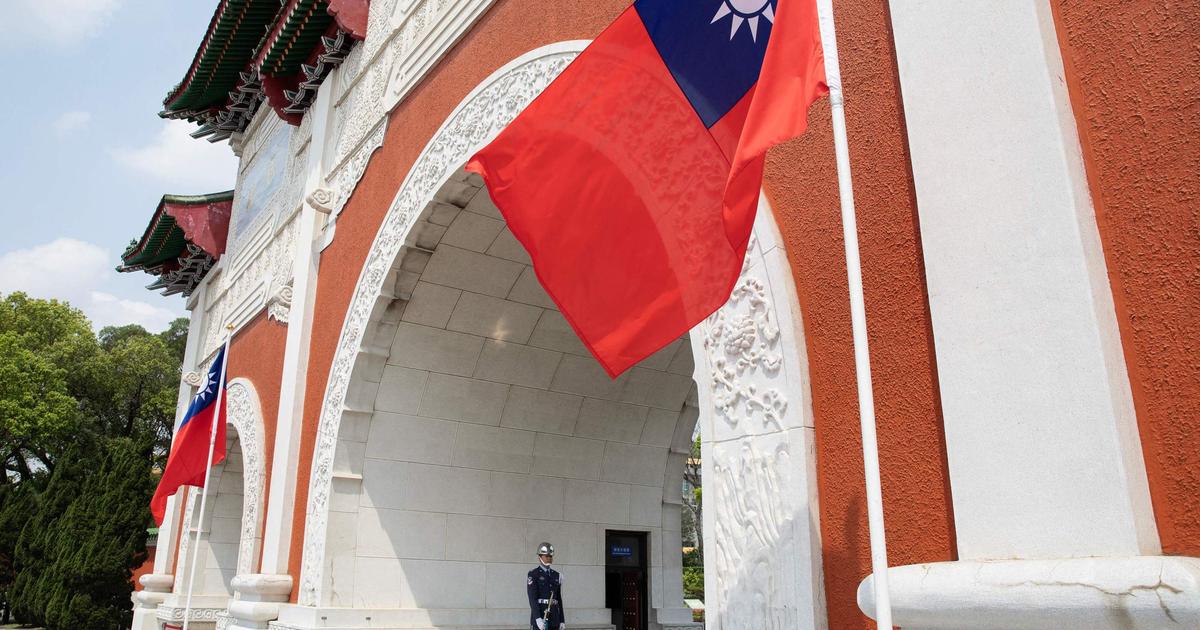1949, separation
Mao Tse-tung's Communists seized power in Beijing in 1949 and drove Chiang Kai-shek's Kuomintang (KMT) nationalists to Taiwan, marking the end of the Chinese Civil War.
The KMT forms a government in Taipei in December, and sever all relations with mainland China.
In 1950, Taiwan became an ally of the United States, which waged war against China in Korea.
Washington deploys a fleet in the Taiwan Strait to protect its new ally from a possible attack.
1971, the UN and the United States recognize the Beijing regime
In October 1971, Beijing took over China's seat at the UN, previously held by Taipei.
In 1979, the United States formally severed diplomatic relations with Taiwan and established relations with Beijing, thus officially recognizing the People's Republic of China.
However, Washington maintains a "
strategic ambiguity
" on the Taiwan issue, and remains the island's most powerful ally, in particular by providing substantial military support.
1987-2004, relations improve
At the end of 1987, residents of Taiwan were allowed to travel to mainland China for the first time since the separation, allowing families to reunite.
Taiwan ended its state of war with China in 1991.
The first talks between the two parties were organized two years later in Singapore.
But in 1995, following a visit by then Taiwanese President Lee Teng-hui to the United States, Beijing launched a series of missile strikes around the island.
Other maneuvers off Taiwan were carried out by the Communists in 1996, in order to dissuade voters from participating in the territory's first democratic presidential election.
In the 2000 elections, the KMT lost power in Taiwan for the first time.
Commercial ties between the two parties improved in the following years.
2005-2015, threats and discussions
In March 2005, Beijing adopted a law authorizing the use of force if Taiwan declared its independence.
In April that same year, Kuomintang Chairman Lien Chan traveled to China to meet then Chinese leader Hu Jintao, a historic visit.
In 2008, relations warmed up: Ma Ying-jeou of the KMT was elected president, on a program favorable to Beijing.
The two shores signed a framework agreement for economic cooperation in 2010 and in 2014 organized the first government-to-government discussions since the separation.
2016, the honeymoon ends
Tsai Ing-wen of the traditionally pro-independence Democratic Progressive Party (PDP) won the January 2016 presidential election.
In June of that same year, China suspended all communication with Taiwan: Ms. Tsai refused to recognize the One China Principle by which the island and the Continent would be part of a single country.
In December, Donald Trump, then President of the United States, broke with decades of American diplomatic policy and spoke directly on the telephone with Tsai Ing-wen.
Xi Jinping declared in January 2019 that the reunification between China and Taiwan is “
inevitable
”.
2021, Sino-American tensions
In 2021, Chinese military aircraft are making hundreds of incursions into Taiwan's defense zone.
In October, US President Joe Biden says the United States will defend Taiwan if China attacks it, comments partially denied by the White House.
2022, the visit of Nancy Pelosi and the ire of Beijing
On August 2, 2022, Nancy Pelosi, then Speaker of the United States House of Representatives, landed in Taiwan, as part of an Asian tour.
Furious, Beijing triggers large-scale military maneuvers around the self-administered island in retaliation.
Taiwan is surrounded on August 4, and missile fire is carried out for a week.
As part of these exercises, fighter jets and warships were deployed.
Taipei responded with its own exercises, and within weeks the United States sent warships to the strait and announced new military aid programs to the island.
China imposes sanctions on Nancy Pelosi, but her visit encourages other American and European delegations to visit Taiwan.
Taiwanese President Tsai Ing-wen speaks during a lunch meeting with Michael McCaul, Chairman of the United States House Foreign Affairs Committee TAIWAN PRESIDENTIAL OFFICE/REUTERS
2023, meeting between Tsai and McCarthy -
Tsai Ing-wen makes two stops in the United States, before and after a visit to her dwindling Latin American allies.
She meets with Speaker of the House of Representatives Kevin McCarthy in Los Angeles on April 5.
Beijing is threatening retaliation to "
defend
" its sovereignty, insisting that Taiwan is part of its territory.
On April 8, the day after Ms. Tsai's return to Taipei, Beijing announced three days of military exercises.
That day, the Taiwanese Ministry of Defense detected at least eight warships and 42 fighter jets around Taiwan.
Twenty-nine planes enter southwest of Taiwan's Air Defense Identification Zone (ADIZ), and Beijing speaks for the first day of training to "
encircle
" Taiwan.
On Monday 10, Beijing is organizing live-fire exercises near Pingtan (southeast), the closest point in mainland China to Taiwan.

